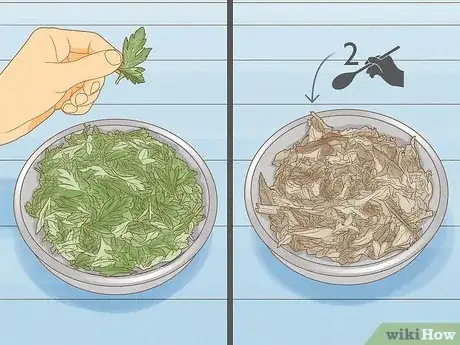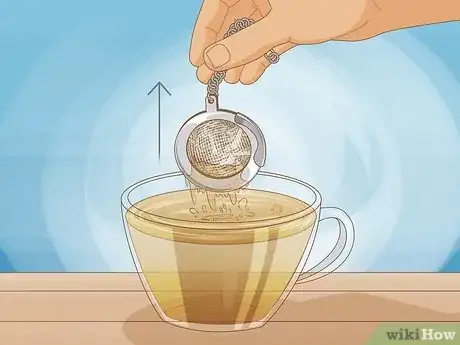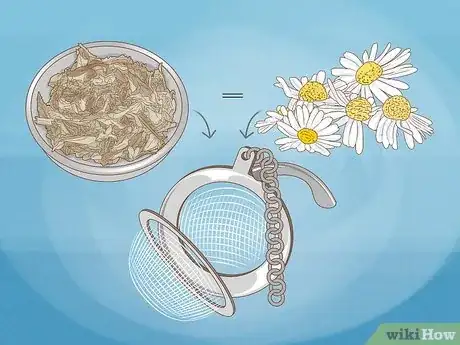This article was co-authored by wikiHow staff writer, Jessica Gibson. Jessica Gibson is a Writer and Editor who's been with wikiHow since 2014. After completing a year of art studies at the Emily Carr University in Vancouver, she graduated from Columbia College with a BA in History. Jessica also completed an MA in History from The University of Oregon in 2013.
There are 8 references cited in this article, which can be found at the bottom of the page.
This article has been viewed 6,906 times.
Learn more...
Mugwort has been used in traditional medicine and folk remedies for centuries. If you're interested in its digestive or calming properties, brew a cup of mugwort tea. Mugwort has a grassy and slightly bittersweet taste that's pleasant on its own. In this article, we'll walk you through the process of steeping a simple cup of mugwort tea.
Things You Should Know
- Start with either dried or fresh mugwort leaves. Steep them in boiling water for 5 to 15 minutes.
- Mugwort is thought to aid insomnia and irregular menstrual cycles, and has been proven to have antioxidant and antifungal properties.
- Mix mugwort with white tea, camomile, cinnamon, and nutmeg to make a tea for lucid dreaming.
Steps
Warnings
- Mugwort is very similar to ragweed. If you're allergic to ragweed pollen, you may want to avoid mugwort since it can trigger an allergic response.[11]⧼thumbs_response⧽
- Avoid drinking mugwort during pregnancy because it can cause uterine contractions. Since more research is needed to determine if it's safe to use while breastfeeding, it's best to avoid it.[12]⧼thumbs_response⧽
Things You'll Need
- Teapot or pot
- Mug or tea cup
- infuser basket or large paper filters
- Measuring cups and spoons
References
- ↑ http://webprod.hc-sc.gc.ca/nhpid-bdipsn/monoReq.do?id=140&lang=eng
- ↑ https://www.ncbi.nlm.nih.gov/pmc/articles/PMC7583039/
- ↑ http://webprod.hc-sc.gc.ca/nhpid-bdipsn/monoReq.do?id=140&lang=eng
- ↑ https://youtu.be/qhjkmWs8dg4?t=170
- ↑ https://gourmetsafari.com/recipe/mugwort-tea-muggles-brew/
- ↑ https://engagingthesensesfoundation.com/tea-recipes-to-strengthen-your-intuition/
- ↑ https://engagingthesensesfoundation.com/tea-recipes-to-strengthen-your-intuition/
- ↑ http://www.flowerfolkherbs.com/articles1/category/mugwort
- ↑ https://www.ncbi.nlm.nih.gov/pmc/articles/PMC7583039/




























































